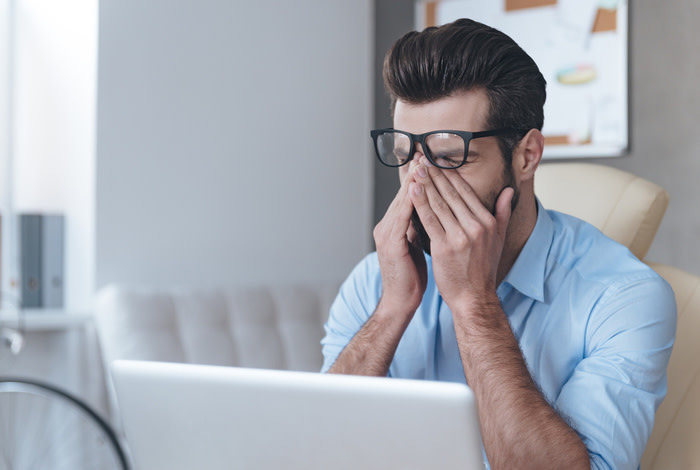
Screens are a permanent fixture in our lives. From staring at our computers at work to binge-watching Netflix series on our laptops, scrolling through social media on our phone, playing Candy Crush on the iPad, even shopping online for our groceries – digital screen consumption is intertwined with our existence. As the amount of time spent in front of screens continues to rise, so too is the prevalence of digital eye strain.
What is Digital Eye Strain?
Digital eye strain refers to any eye and vision-related problems caused by prolonged digital screen use, particularly on mobile phones, tablets, computers, and laptops. Sometimes called Computer Vision Syndrome, it’s the result of focusing on a digital screen at a close distance for an extended period of time.
When you look at a digital screen, the number of times you blink is drastically reduced. This causes the eyes to strain and become dry . Debris can also build up and result in irritation and soreness.
What are the symptoms?
According to one study , Australians are spending an average of 10 hours a day on digital devices. That’s over a third of our day spent in front on an internet-connected device. It’s little surprise that millions of people suffer the symptoms of digital eye strain. According to an international study, 73 per cent of people under 30 say they experience digital eye strain symptoms.
These symptoms include:
- Sore or tired eyes
- Watery, dry or red eyes
- Blurred vision during or at the end of the day
- Head, neck or shoulder pain
- Eye twitching
- Sensitivity to light
10 steps to reduce digital eye strain
For many people, it’s simply not possible to reduce the amount of time spent in front of screens. So, here are ten practical tips that don’t require giving up your day job or going off the grid.
- Adhere to the 20 - 20 - 20 Rule - every 20 minutes pause to focus your eyes on an object that’s 20 feet away (about 6m) for 20 seconds. Doing this gives your eyes a rest from focusing too intently on short distances.
- Ensure your computer screen is positioned an arm’s length away from your face (approx. 60 to 65 centimetres).
- Have your computer 10 to 25 degrees below eye level. Adjust the height of your monitor so that you are looking slightly down at your work.
- Use devices that have less glare/reflection or use a matte screen filter.
- Increase the contrast between text and the background on your computer and ensure the text isn’t too small to read. Your eyes will find it easier to read dark text on a white or slightly yellow background. You can adjust this on your computer’s display settings.
- Stop for a break every two hours.
- Book an eye test
- Blink frequently to moisten eyes or use eye drops to stop your eyes from becoming dry.
- Adjust your screen’s brightness. You don’t want it to be too dark or too bright. Aim for the brightness to blend in with your surroundings, so it isn’t brighter or darker than the room you are in.
- Increase the warmth of your screen. Your eyes absorb more blue light than yellow light and making the screen “warmer” can help to ease digital eye strain symptoms. You can generally adjust the warmth of the screen in the display settings of your device.
If you’re suffering from digital eye strain symptoms, it’s recommended to book an appointment with a local optometrist . They will be able to provide appropriate treatment options and check to ensure there are no underlying problems, such as refractive error, which may worsen digital eye strain if left untreated.